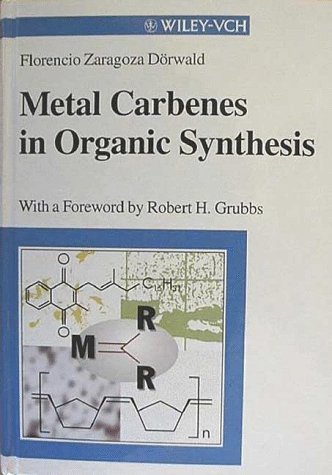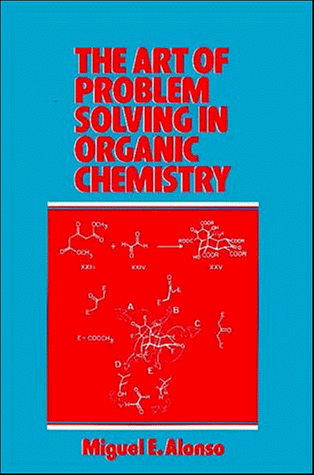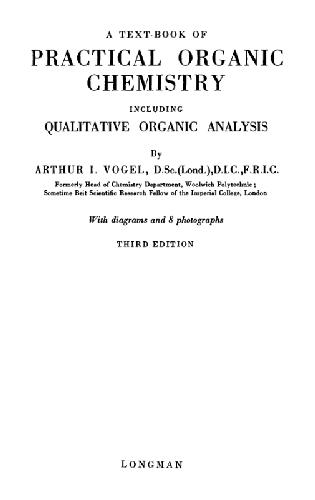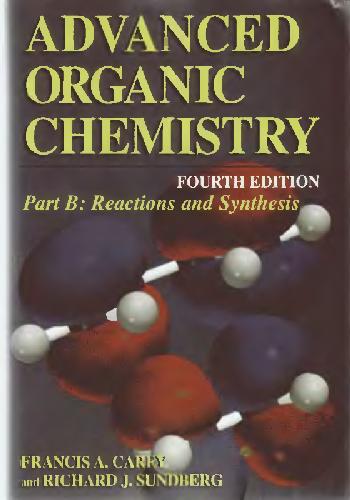Florencio Zaragoza Dörwald, Florencio Zaragoza Dorwald9783527296255, 3-527-29625-5
Table of contents :
Metal Carbenes in Organic Synthesis……Page 6
Table of Contents……Page 12
Abbreviations……Page 16
Experimental Procedures……Page 18
1 1 Reactivity of Carbene Complexes……Page 30
1.2 Fischer-Type and Schrock-Type Carbene Complexes: Theoretical Treatment……Page 32
1.3 Olefin Metathesis and Olefin Cyclopropanation……Page 34
1.4 Characteristic NMR Data……Page 38
2 Heteroatom-Substituted Carbene Complexes……Page 42
2.1.1 From Acyl Complexes……Page 43
2.1.1.1 From Acyl Complexes Generated from Carbonyl Complexes……Page 44
2.1.1.2 From Acyl Complexes Generated from Metallates……Page 47
2.1.1.3 From Acyl Complexes Generated by Other Methods……Page 48
2.1.3 From a-Haloiminium Salts and Metallates……Page 50
2.1.4 From Carboxamides and Metallates……Page 51
2.1.5.2 From Vinylidene Complexes Generated from Alkynyl Complexes……Page 54
2.1.6 From Carbenes and Carbenoids……Page 56
2.1.7 From Alkyl Complexes by a-Abstraction……Page 58
2.1.8 From Carbyne Complexes……Page 61
2.1.9 Other Methods……Page 62
2.2 Synthetic Applications of Heteroatom-Substituted Carbene Complexes……Page 63
2.2.1 General Considerations……Page 64
2.2.2 Demetallation and Formation of Acyclic Products……Page 66
2.2.3 Photochemical Transformations……Page 70
2.2.4 Cyclopropanation……Page 74
2.2.5.1 The Dötz Benzannulation Reaction……Page 78
2.2.5.2 Other Thermal Benzannulations……Page 84
2.2.6.1 Cyclization of (1,3-Butadien-1-yl)carbene Complexes……Page 85
2.2.6.2 Cyclization of Functionalized Carbene Complexes……Page 92
2.2.6.3 Rearrangement of Ammonium Ylides……Page 93
2.2.6.4 Other Methods……Page 94
2.2.7 Formation of Six-Membered. Non-Aromatic Carbocycles and Six-Membered Heterocycles……Page 95
2.2.8 Formation of Seven-Membered Rings……Page 99
3 Non-Heteroatom-Substituted Carbene Complexes……Page 104
3.1 Generation of Non-Heteroatom-Substituted Carbene Complexes……Page 105
3.1.1 a-Abstraction of Electrophiles (Nucleophilic Abstraction)……Page 107
3.1.2 a-Abstraction of Nucleophiles (Electrophilic Abstraction)……Page 111
3.1.2.1 a-Abstraction of Hydride……Page 112
3.1.2.2 a-Abstraction of Oxygen-Bound Leaving Groups……Page 113
3.1.2.3 a-Abstraction of Thioethers……Page 116
3.1.2.4 a-Abstraction of Halides……Page 118
3.1.3.1 From Diazoalkanes……Page 119
3.1.4 From Carbyne Complexes……Page 122
3.1.4.1 Nucleophilic Additions to Carbyne Complexes……Page 123
3.1.4.2 Electrophilic Additions to Carbyne Complexes……Page 125
3.1.6 From Alkyne and Cyclopropene Complexes……Page 127
3.1.7 By [2 + 2] Cycloreversion……Page 129
3.1.8 Other Methods……Page 130
3.2.1 General Considerations……Page 132
3.2.2 Cyclopropanation……Page 134
3.2.2.1 Stoichiometric Cyclopropanations……Page 135
3.2.2.2 Catalytic Cyclopropanations with Diazoalkanes……Page 143
3.2.2.3 Catalytic Cyclopropanations with Other Carbene Precursors……Page 145
3.2.3.1 C-H Insertions of Nucleophilic Carbene Complexes……Page 148
3.2.3.2 C-H Insertions of Electrophilic Carbene Complexes……Page 151
3.2.4.1 Carbonyl Methylenation……Page 154
3.2.4.2 Carbonyl Olefination with Higher Alkylidenes……Page 158
3.2.5 Olefin Metathesis……Page 163
3.2.5.1 General Considerations……Page 164
3.2.5.2 Heterogeneous Catalysts……Page 167
3.2.5.3 Homogeneous Catalysts……Page 169
3.2.5.4 Scope and Limitations of Molybdenum- and Ruthenium-Based Homogeneous Catalysts……Page 172
3.2.5.5 Ring-Opening Metathesis Polymerization (ROMP)……Page 173
3.2.5.6 Ring-Closing Metathesis (RCM)……Page 177
3.2.5.7 Cross Metathesis……Page 190
3.2.5.8 Ring-Opening Cross Metathesis……Page 197
3.2.6 Other Applications of Non-Heteroatom-Substituted Carbene Complexes……Page 198
4.1 Generation of Acceptor-Substituted Carbene Complexes……Page 200
4.1.1.1 Preparation of Acceptor-Substituted Diazomethanes……Page 201
4.1.1.2 Catalysts for Diazodecomposition……Page 204
4.1.3 From Other Carbene Complexes……Page 205
4.2.1 General Considerations……Page 207
4.2.2.1 Scope and Limitations……Page 208
4.2.2.3 Intramolecular 1,2-C–H Insertions……Page 209
4.2.2.5 Intramolecular 1,4-C–H Insertions……Page 210
4.2.2.6 Intramolecular 1,5-C–H Insertions……Page 211
4.2.2.8 Intermolecular C–H Insertions……Page 218
4.2.3 Si–H Insertions……Page 221
4.2.5 X-H Insertions (X: N, O, S)……Page 222
4.2.5.1 N-H Insertions……Page 223
4.2.5.2 O-H Insertions……Page 225
4.2.5.3 S-H Insertions……Page 226
4.2.6.1 Ammonium Ylides……Page 227
4.2.6.2 Azomethine Ylides……Page 231
4.2.6.3 Nitrile Ylides……Page 232
4.2.6.4 Oxonium Ylides……Page 234
4.2.6.5 Carbonyl Ylides……Page 235
4.2.6.6 Sulfonium Ylides……Page 242
4.2.6.7 Thiocarbonyl Ylides……Page 245
4.2.6.8 Other Ylides……Page 246
4.2.7.1 Scope and Limitations……Page 247
4.2.7.2 Stereoselectivity……Page 248
4.2.7.3 Intramolecular Cyclopropanations……Page 249
4.2.7.4 Intermolecular Cyclopropanations……Page 253
4.2.8 Formal 1,3-Dipolar Cycloadditions of Acyl- and Vinylcarbene Complexes……Page 255
4.2.9 Ring Fission of Pyrroles and Furans……Page 260
4.2.10 Other Synthetic Applications of Acceptor-Substituted Carbene Complexes……Page 261
5 Bibliography……Page 262
Index……Page 296







Reviews
There are no reviews yet.